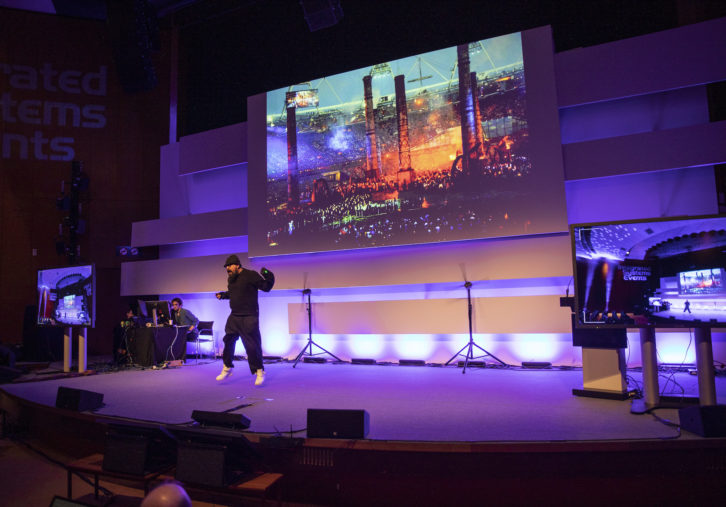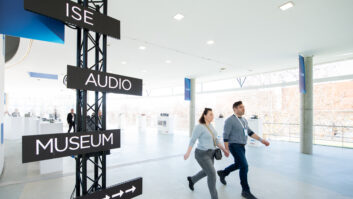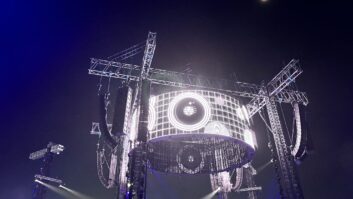
Tupac Martir is a man who doesn’t think small. Nor does he give up easily. During the ISE 2019 Closing Keynote, the visual artist, creative director and founder of Satore Studio, guided the audience through some of his incredible projects and the work that goes into creating them.
As Martir said: “I love exploring, I love being the guy at the tip of the iceberg.” Being in this position means often things don’t always go to plan, but this almost seems to be part of the appeal.
“My life is a life of failure; I assume I won’t get it right until 150 times in. It’s hard to be the person implementing new things.”
The keynote went on to showcase a number of projects that very much went right – and one that didn’t quite go to plan but still yielded interesting results. This was Neiya, and the ISE audience were the first people to see this multimedia presentation, which involves motion capture, music, movement, Z cams and a whole lot more, outside of the team that developed it.
In the case of Neiya, Martir and his team spent six months with the content trying to understand it and get the movement and music across how they felt it was supposed to be in order to actually create a piece.
According to Martir: “Sometimes we fail and in this case we failed massively. But that’s OK. We accepted it wasn’t going to happen, so we decided to just keep trying to build the resources that needed to be built to tell the story that we want to tell. But the coolest bit about it is, as we’re developing all this we’re starting to understand a whole lot of things that we can actually sell to brands and to clients; we’re starting to create turnkey solutions that allow us to actually create new elements that people will want to see.”
Of course, this keynote was no straightforward presentation. Instead Martir came on to the stage wearing a Perception Neuron motion capture system. This, used in combination with a range of technology, including BlackTrax, disguise gx 2 media server, Notch and STYPE, enabled live MR content to surround, follow and interact with Martir’s avatar on screens either side of the stage. In addition, various holograms appeared at the back of the stage illustrating the projects being discussed.
The result, like so many of Martir’s projects, was an engaging, detailed and original presentation that pushed the boundaries of what can be done when AV technology and a unique mind meet.







